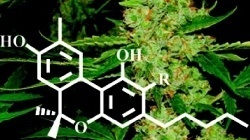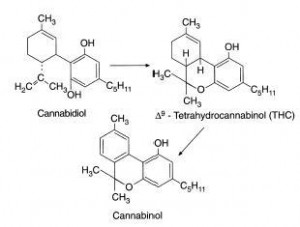 The testing of cannabis for the potency of cannabinoid compounds and the presence of pesticides, molds, and solvents has become a critical component of the medical cannabis industry. Every day, decisions about patient dosing and safety, and millions of dollars in transactions are based on results provided by testing labs.
The testing of cannabis for the potency of cannabinoid compounds and the presence of pesticides, molds, and solvents has become a critical component of the medical cannabis industry. Every day, decisions about patient dosing and safety, and millions of dollars in transactions are based on results provided by testing labs.
But with the rapid growth of the cannabis testing industry, these programs have grown without some of the mechanisms that provide for dependable, reproducible results. Recently I spoke with a reputable grower who sent a sample of a well-characterized variety to a testing lab for potency evaluation, only to receive a surprisingly low THC value.
As a result, he sold the product for roughly half of its expected value. A short time later, he became suspicious and sent a second sample of the same batch to another lab. This time, he received the anticipated high levels of THC, both labs were well respected and both used state-of-the-art methods. The reality is that analytical testing is difficult to do well.
Cannabis testing labs are now using gas chromatography and liquid chromatography instrumentation that is highly sensitive, and extremely susceptible to variability from the slightest variation in methods, reagents, and laboratory practice.
And to make matters even tougher, the compounds in cannabis, notably cannabinoids, and terpenoids, are just now being characterized. This is brand new science being conducted by an unregulated, unstructured industry that is large without the financial, academic, and institutional support of almost every other scientific discipline.
But now the testing industry is faced with a challenge. We must demonstrate that we can test samples accurately and reproducibly, to the point that two different labs can be expected to produce the same results from the same sample.
Without this confidence, the testing industry is just filling some useless requirements while patients are at health risk and producers and consumers are at financial risk. What is required is standardization and validation.
The good news is that we can look to other industries for some help in how our testing industry can improve and mature. Countless industries, including pharmaceutical, semiconductor, food, and many others, have refined the ability to accurately and dependably test and measure physical compounds and materials.
This is the science of metrology. Metrology is the science of measurement, and it is the basis for testing.
In testing and metrology, it is essential to demonstrate the accuracy and reproducibility of your methods and instruments and to validate that individual labs have adequate proficiency in these methods to provide accurate and reproducible results.
One important and commonly used tool to validate testing and measurement labs is the Inter-Lab Comparison and Proficiency Test (ILC/PT). This is a program of sending a known standard to various testing labs to evaluate how well they perform.
It is commonly used for ISO accreditation and other regulatory measures. While the individual results are confidential to the lab (and their regulatory agencies if required), the overall results provide a tremendous amount of information about how different instrumentation and methods impact the test results, and where to improve.
Standardized Cannabis Testing Methods
 They provide data to define standardized methods, industry-standard deviations, how the measurements relate to practical applications in the industry, and more. These tests are repeated frequently to demonstrate continued proficiency, and they are continually modified to fill the needs of the industry.
They provide data to define standardized methods, industry-standard deviations, how the measurements relate to practical applications in the industry, and more. These tests are repeated frequently to demonstrate continued proficiency, and they are continually modified to fill the needs of the industry.
There are many components of the cannabis industry to which an ILC/PT would contribute. For example, if you walk into any dispensary you’ll see THC potency values on various products.
So the question is this: Is a product listed at 18% THC different than a product listed at 12%? If the same product sample of a truly 15% THC flower was sent to the same lab on two different days, what would the results say?
What about two different labs? Would they say 12 one day and 18 the next? If so, that’s a difference of + or – 3 or 20% of the actual value of 15. So this is a standard deviation of 20%.
If we send a known sample to 20 different labs participating in an ILC/PT, and we find that we have an average standard deviation of 20%, that tells us that products labeled as 12% and 18% THC are essentially the same thing. On the other hand, if we find we have an average standard deviation of 5%, that tells us that these products are very different.
And this has huge implications for patient dosing and safety, as well as fairness to both consumers and producers who pay or sell based on these numbers.
But currently, we don’t know. An ILC/PT can also provide valuable data for a testing lab to identify and improve an internal problem.
For example, if a testing lab has a glitch in a method that repeatedly leads to potency values that are off by 20% of the total while the industry standard deviation is 3%, it is far better for the ILC/PT to identify this problem before their customers figure it out.
The ILC/PT results would alert the lab and allow them to fix the error before it ruins their credibility and possibly their business. ILC/PT programs in the cannabis industry are now being offered.
Programs that evaluate the proficiency of measuring cannabinoids, pesticides, molds, and terpenes will likely become available. With this information, we’ll gain insight as to the best methods that serve our industry.
We’ll learn how to apply dependable testing data to the practical decisions our stakeholders make every day. We’ll gain fairness in pricing, we’ll optimize dosing, and help assure safety. And with that, we’ll all benefit.
Let us know what you think.




Responses